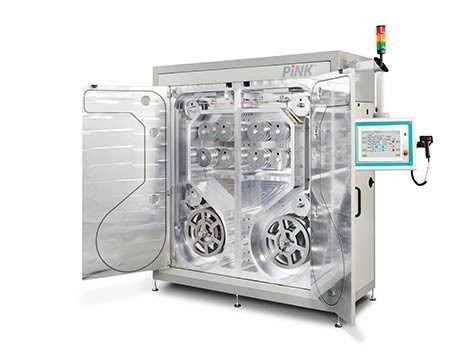The future of the modern industry is irreversibly linked to plasma technology. More and more processes are replaced with their plasma analogues. In this article, we will summarize what are the plasma processes, where can we see them in action and why do they become more and more ubiquitous throughout the industrial and technological evolution.
First, a few examples. Plasma processes are already widely used in packaging and textile industries for surface functionalization and wetting or adhesion enhancement. In yarn production, plasma pre-treatment and finishing have become crucial steps that no large-scale process can function without. In the automotive industry, almost any part of the car, from backlights to windshields is plasma-treated for micro-fine cleaning and surface activation. Emerging technologies, such as solar energetics and electromobility, are employing plasma techniques for synthesis, functionalization and preservation of advanced materials. And, of course, electronics production. PCBs, LEDs, displays and mobile phones - all of them are now manufactured using plasma treatment as an essential production step.

So what is causing this popularity of plasma processes? Why are they currently considered to be among the greenest and more efficient alternatives to their wet and chemical analogues? To get to the bottom of this, first, we need to understand what is a plasma treatment and what makes it unique.
First described as such by Irving Langmuir in 1928, plasma is a state of matter, along with solid, liquid or gas. But whereas gas consists of neutral particles, like oxygen or nitrogen, plasma can be seen as a “gas of ions and electrons”. It is typically produced by subjecting a gas to a strong electromagnetic field or heat. Plasma often emits vibrant and radiant colors, which you observe every day in neon lighting, fire and, most commonly, the sun. This stream of charged and reactive particles interacts with the target surface in a way that depends on the particle type, stream intensity and energy.

Industrially-used plasma is often referred to as “nonthermal” or “cold plasma”, where the gas temperature barely exceeds ambient conditions, and the treatment is used not to burn the surface, but to modify it. Plasma can be a very gentle surface technique, often affecting just a top few atomic layers, changing their chemical nature or completely removing them. In fact, it can be so benign, that it is widely used in hand and teeth sterilization. That is why it is perfect for the activation of sensitive, functional materials. The most widely used plasma machines are called “plasma cleaners” or “plasma etchers”, and they are commonly installed in large-volume production lines to clean and pre-treat the surfaces.

There are numerous advantages to plasma treatment. First of all, it is important to understand that the alternatives to plasma, chemical or heat treatment, both have intrinsic problems that can be completely avoided using plasma. The necessity to work with toxic and dangerous chemical and corresponding material waste in the case of chemical treatment and the huge losses of energy in case of heat treatment. Plasma is by far the greenest, solvent-free, material- and energy-efficient technology of all three.
An additional advantage is the overall degree of control over the treatment process. Plasma systems are turned on and off instantaneously, and the parameters are easily tunable. Plasma’s unique properties and low substrate damage also mean a much wider pool of possible substrates - and that includes lighter, more flexible and more cost-efficient substrates which were previously too sensitive to the existing surface treatments. And in the modern world of flexible and single-use devices, the right substrate makes all the difference.

The physics of plasma processes also allows us to use new approaches that are completely impossible to achieve by other methods. The most common industrial example is probably plasma-assisted polymerization, which is widely used to mass-produce polymers, such as polystyrenes, polyacrylates and polythiophenes. Another example of plasma-enabled technology is OrelTech’s metallization process and conductive inks.
In the last decade, plasma systems have been experiencing a Renaissance of sorts. More and more industries switch to plasma-based technologies and integrate them into production lines. Plasma producers have been relentlessly inventive and found abundant new approaches to harness plasma’s untapped potential and find new prospects for plasma systems. There are multiple possibilities for batch and roll-to-roll manufacturing, capable of satisfying any need for production volumes and rates. It is already clear that the future of many manufacturing processes lies in vivid lilac plasma glow.
Dr Natalia Zamoshchik, Dr Konstantin Livanov
With the help of Dr. Jakub Kelar (Masaryk University)
This article was originally published on LinkedIn on December 1, 2020. https://www.linkedin.com/pulse/ubiquity-benefits-plasma-systems-konstantin-livanov/?trackingId=ykySNQ1qGftNXgKILlFjCw%3D%3D
